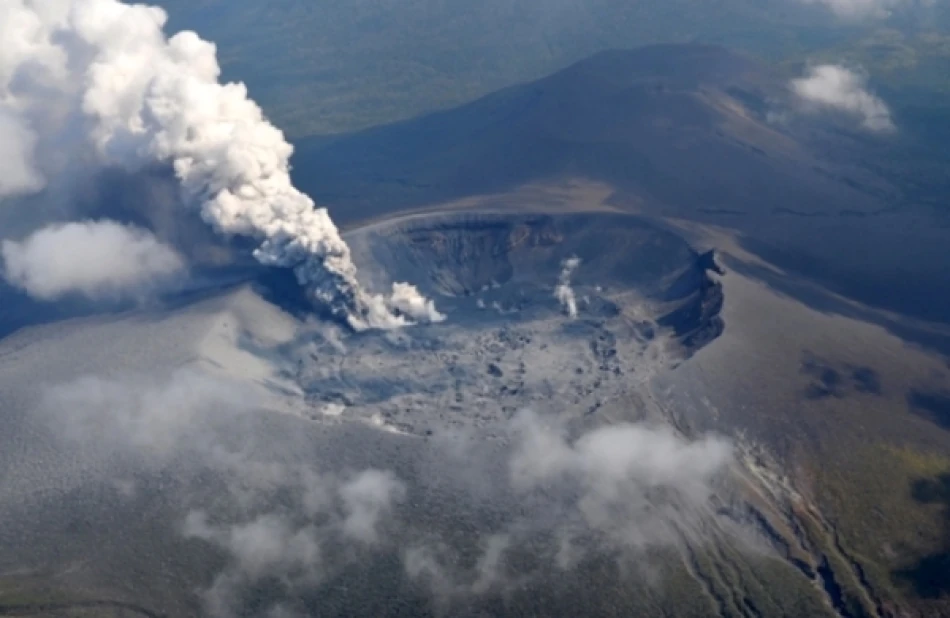
Explosive Eruption Shoots Japanese Volcano's Fiery Lava Plume Soaring 5,500 Meters High
Mount Shinmoe Erupts Again as Japan Maintains Vigilant Watch Over 50 Active Volcanoes
Mount Shinmoe volcano on Japan's southwestern Kyushu Island erupted today, sending an ash plume 5,500 meters into the sky in the most significant volcanic activity since early July. The eruption underscores Japan's position as one of the world's most volcanically active nations, where constant monitoring of dozens of active peaks has become a critical component of national disaster preparedness.
Latest Eruption Details
According to the Japan Meteorological Agency, this morning's eruption launched volcanic materials to heights of 5,000 meters above the volcano's summit—the first time such altitudes have been reached since July 3. The dramatic ash cloud serves as a reminder of the volcano's unpredictable nature, despite relatively quiet periods between major eruptions.
Authorities have maintained the alert level at 3 on Japan's five-point volcanic warning system, advising residents and visitors to avoid approaching the volcano. The affected areas span across Miyazaki and Kagoshima prefectures, regions that have grown accustomed to living in the shadow of active volcanic systems.
Japan's Volcanic Landscape
A Nation Built on Fire
Mount Shinmoe represents just one piece of Japan's complex volcanic puzzle. The country monitors 50 active volcanoes continuously—a necessity born from its location along the Pacific Ring of Fire. This geological reality shapes everything from urban planning to agricultural practices across the archipelago.
The volcano first erupted in 2018, making it a relatively recent addition to Japan's roster of active peaks. However, its behavior patterns already demonstrate the unpredictable nature that characterizes volcanic activity throughout the region.
Monitoring and Preparedness Systems
Japan's approach to volcanic monitoring has evolved into one of the world's most sophisticated early warning systems. The five-level alert system allows authorities to communicate risk levels clearly to both residents and businesses, enabling coordinated responses that minimize disruption while maintaining safety.
This systematic approach reflects lessons learned from decades of volcanic activity, including major eruptions that have shaped Japanese disaster management policies. The continuous monitoring of 50 active volcanoes requires substantial resources but provides invaluable data for predicting future activity patterns.
Regional and Economic Implications
Kyushu Island's volcanic activity carries implications beyond immediate safety concerns. The region's agricultural sector, particularly known for its high-quality produce, must regularly adapt to volcanic ash deposits that can both damage crops and, over time, enrich soil composition.
Tourism in the area also fluctuates with volcanic activity levels. While some visitors are drawn to the dramatic landscapes created by active volcanoes, eruptions like today's can temporarily disrupt travel plans and local businesses that depend on consistent visitor flows.
The aviation industry closely monitors such eruptions, as volcanic ash poses significant risks to aircraft engines. Today's 5,500-meter ash plume height places it well within commercial flight paths, requiring careful coordination between meteorological agencies and air traffic control systems.
Looking Ahead
Mount Shinmoe's latest eruption reinforces the ongoing geological dynamism that defines Japan's landscape. With climate change potentially influencing volcanic activity patterns globally, Japan's extensive monitoring network provides crucial data not just for domestic safety, but for international volcanic research efforts.
The maintained Level 3 alert status suggests authorities expect continued activity, though predicting the duration and intensity of volcanic episodes remains challenging even with advanced monitoring technology. For residents of Miyazaki and Kagoshima prefectures, today's eruption serves as another reminder of the delicate balance between harnessing the benefits of volcanic landscapes and managing their inherent risks.
Most Viewed News

 Layla Al Mansoori
Layla Al Mansoori






